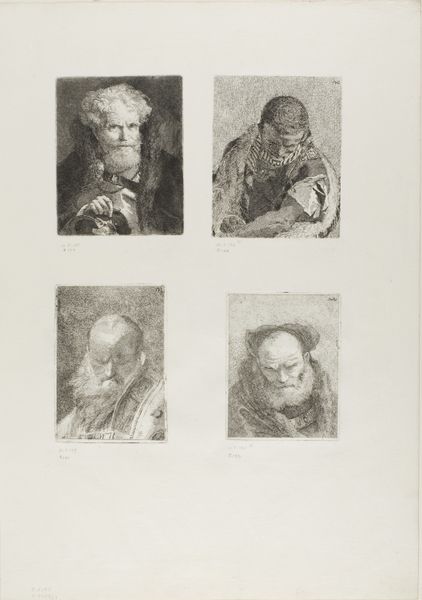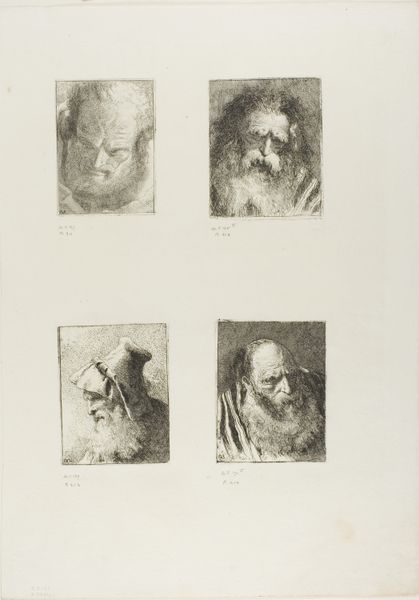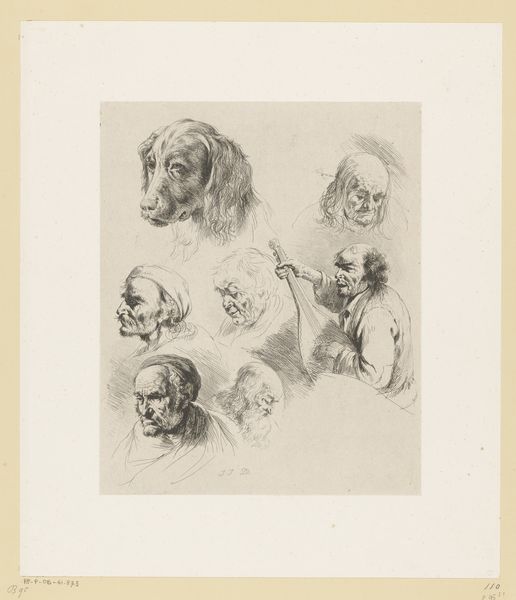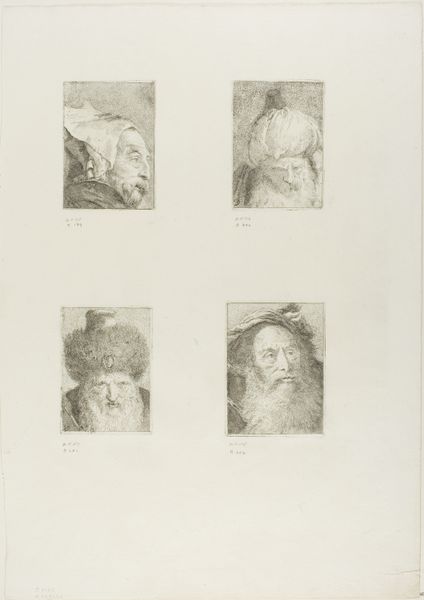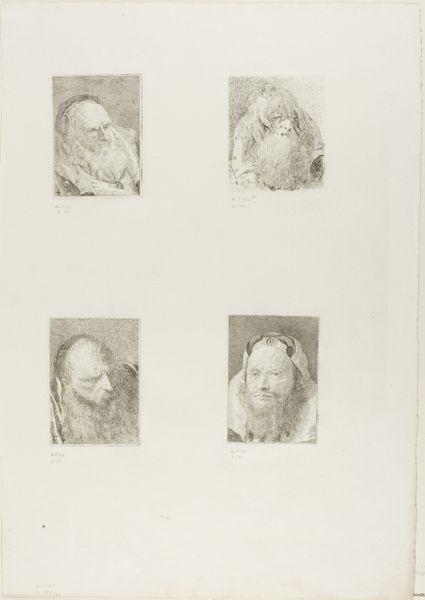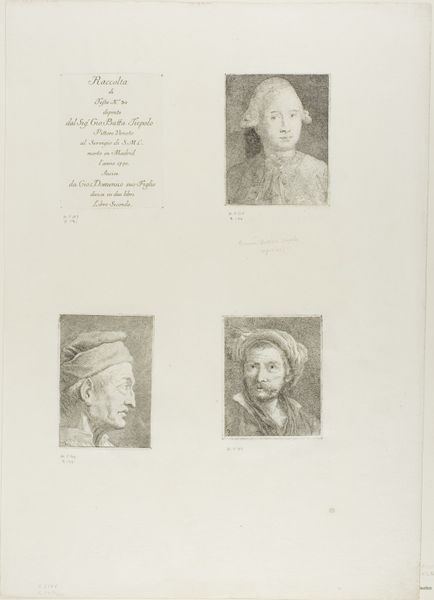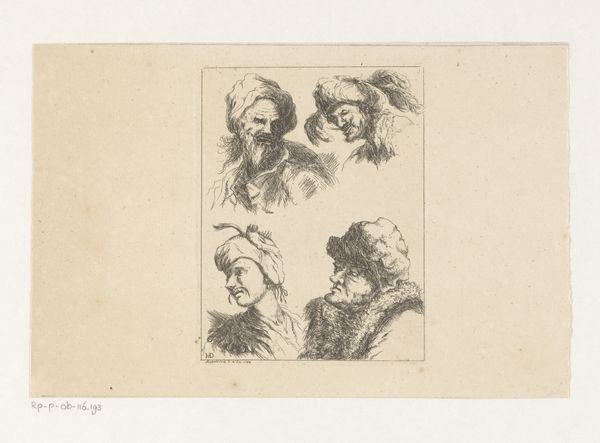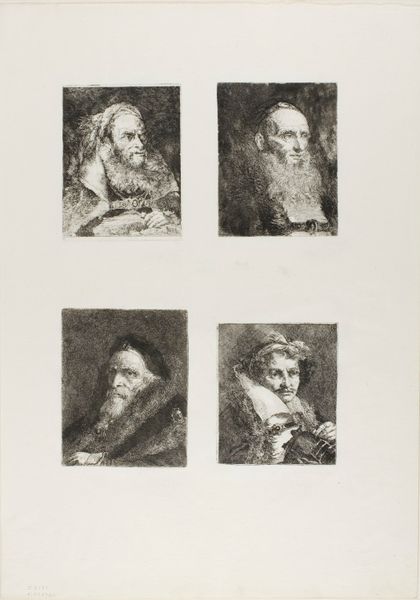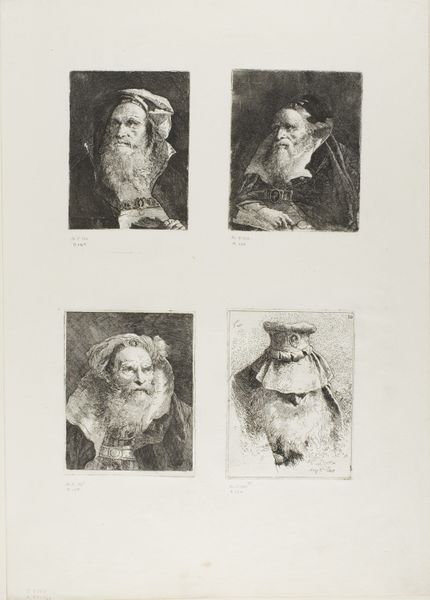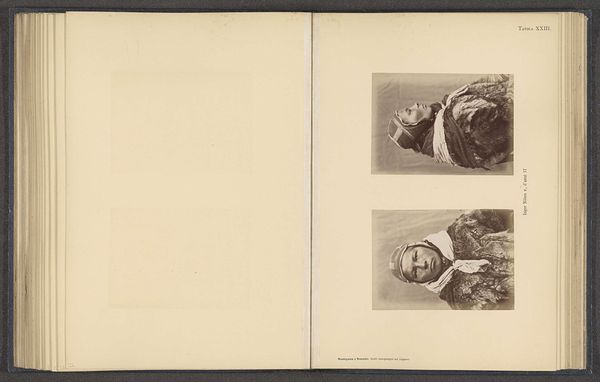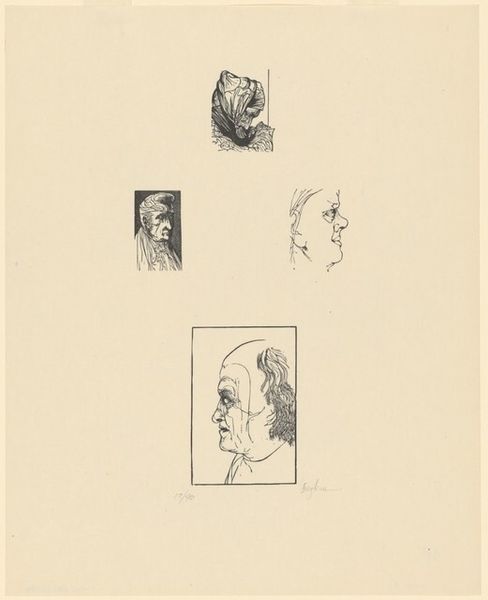
Old Man with a Beard and a Bare Head, Turk Seen from Behind, Turk with a Turban, Turk Seen from Behind 1775
0:00
0:00
Dimensions: 113 × 84 mm (image, upper left); 116 × 86 mm (plate, upper left); 121 × 89 mm (image, upper right); 125 × 92 mm (plate, upper right); 120 × 85 mm (image, lower left); 124 × 87 mm (plate, lower left); 118 × 87 mm (image, lower right); 123 × 91 mm (plate, lower right); 544 × 387 mm (sheet)
Copyright: Public Domain
Editor: This is Giovanni Domenico Tiepolo's "Old Man with a Beard and a Bare Head, Turk Seen from Behind, Turk with a Turban, Turk Seen from Behind," created around 1775. It’s a print made from etching on paper. The array of faces really captures my attention – it's almost like a study in character. What catches your eye when you look at it? Curator: Well, immediately, I think about the cultural context of 18th-century Venice. There was a fashion for what we now term "Orientalism" that informed the depiction of these Turkish figures. Note how they’re presented. Are they active participants or objects of the European gaze? How does Tiepolo's work play into that dynamic? Editor: That's interesting; I hadn't considered the 'European gaze'. They do seem a bit… distant. Does the artistic technique, the etching, contribute to that sense of otherness? Curator: Possibly. Etching lends itself to sharp lines and defined forms. Consider who controlled artistic representation during this time and whose stories were prioritized. Editor: So, the politics of image-making even extends to something as seemingly simple as a character study. What can you tell me more about this "Orientalism?" Curator: Essentially, it's the Western appropriation and often misrepresentation of Eastern cultures. It reflects power imbalances and shapes perceptions. You see this played out repeatedly throughout art history; It reflects power imbalances and shapes perceptions of the “other”. So when you look at these faces, consider the broader social and political forces at play. Who is this "Turk" according to Tiepolo, and perhaps more importantly, according to Venice? Editor: This really puts a new perspective to Tiepolo's artistic choice. I guess it pushes us to look deeper beyond just the surface of artistic expression and consider its cultural implications, Curator: Precisely! Art isn't made in a vacuum. Understanding its historical context allows us to appreciate its complexities and even its contradictions.
Comments
No comments
Be the first to comment and join the conversation on the ultimate creative platform.
